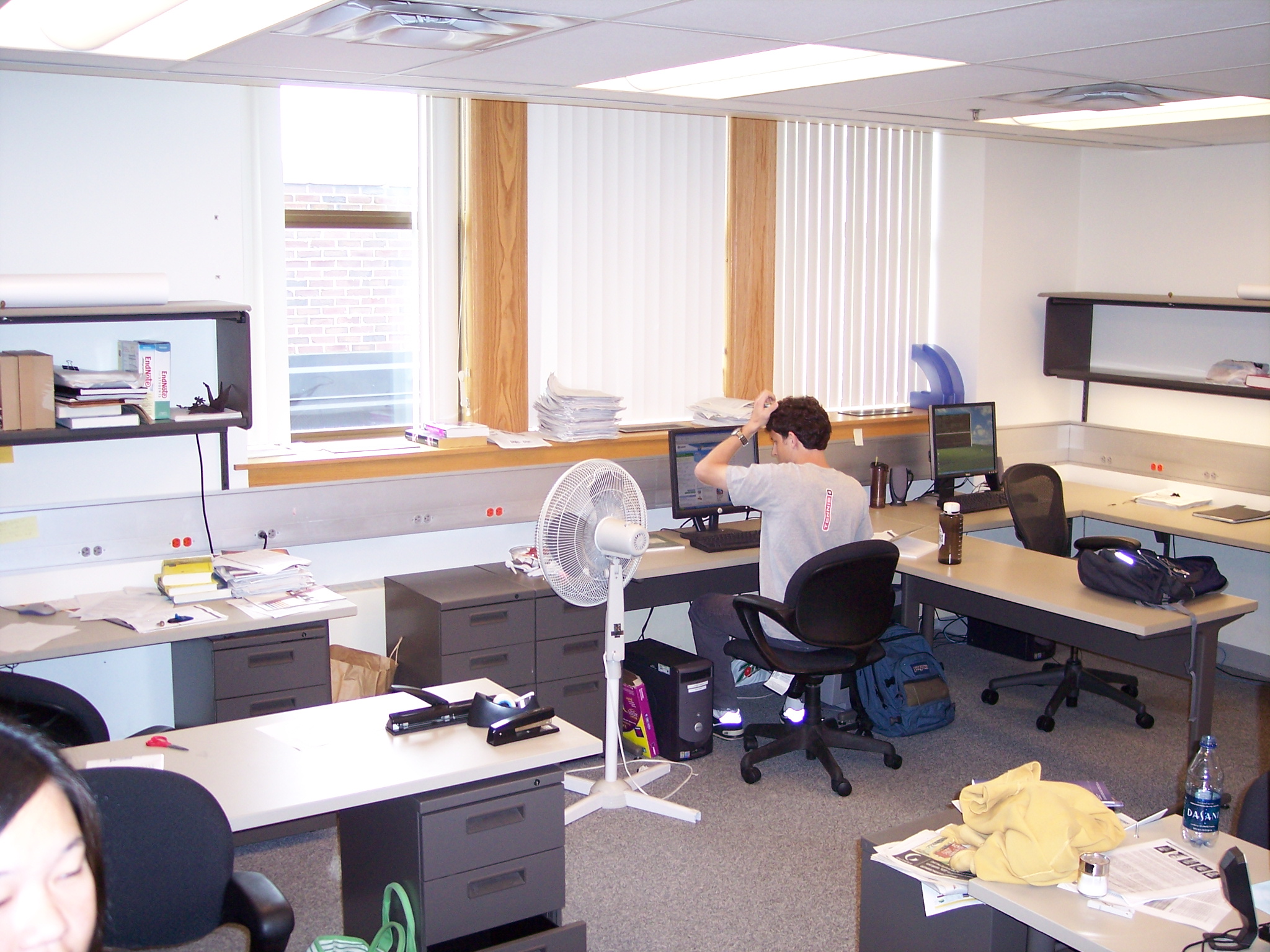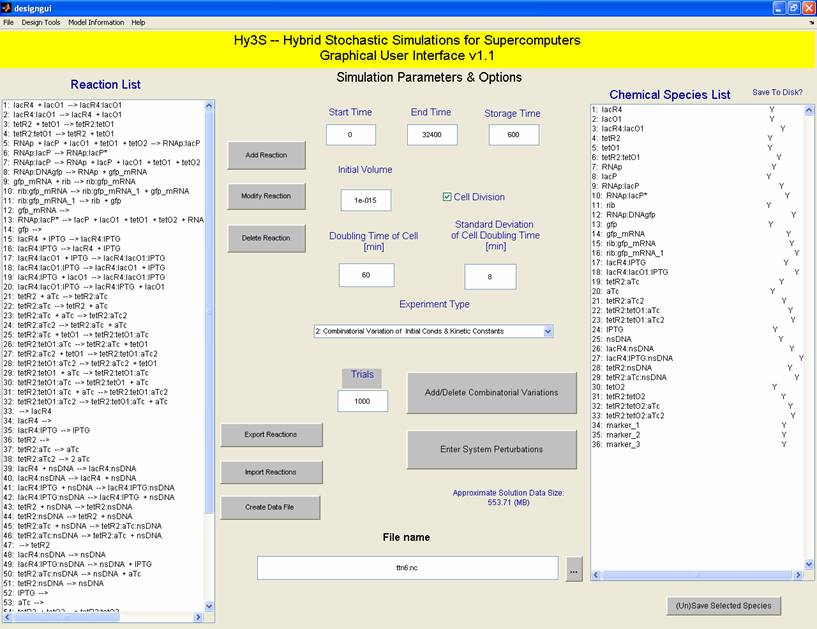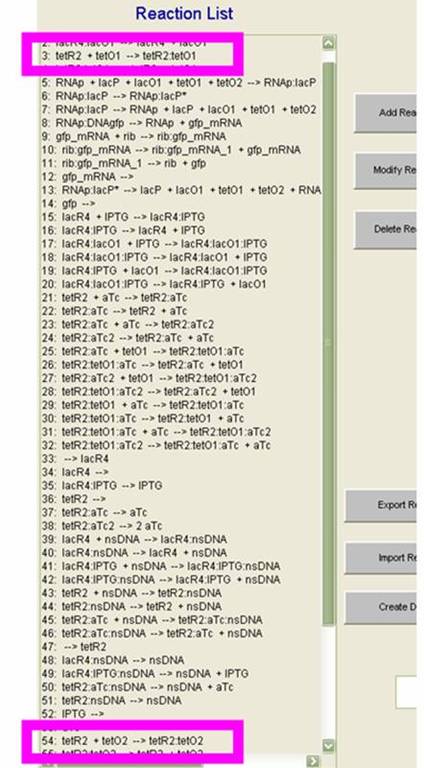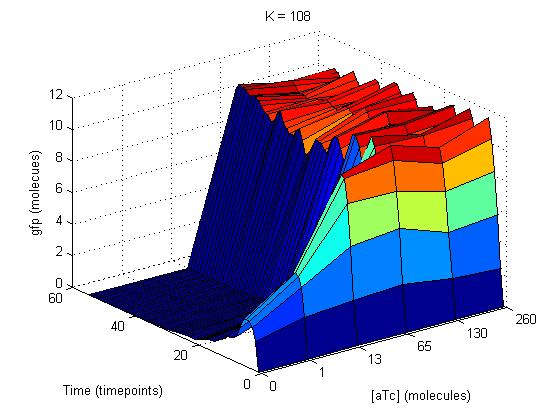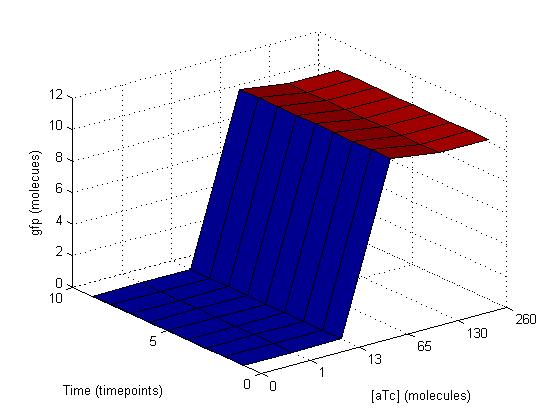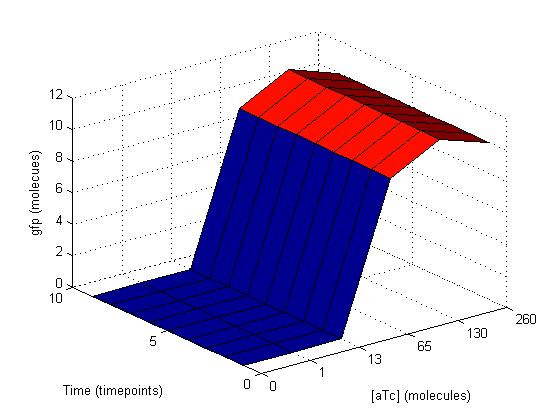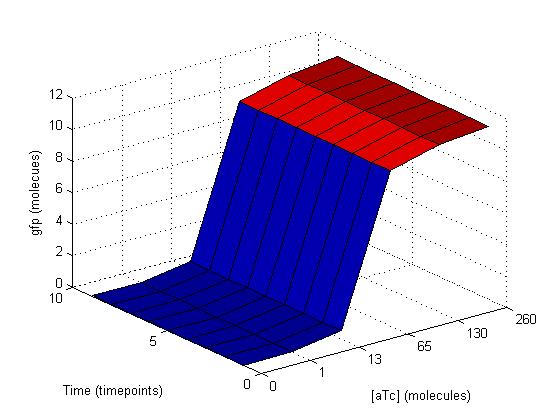Team:Minnesota/Modeling
From 2009.igem.org
| Home | The Team | The Project | Submitted Parts | Modeling | SynBioSS Designer | Parts Characterization | Experiments and Calendar |
|---|
Our Modeling Goals
Create mathematical models of our experimental results. Our computational output will guide future research and is the key to determining what is happening at the molecular level of our logical AND gate.
Mathematical Modeling
It is important to be able to observe the fidelity of the AND gate in silico as well as in vivo. Using our in-house software suite, SynBioSS, we used networks of sixty or more reactions to model the AND gate with different constructs and mutations. Similar to the experimental procedures, we quantified the fidelity of our AND gate with GFP. We also used a MATLAB Graphical User Interface (GUI) to analyze our experimental data. We used our empirical data from the wet lab to perfect our model.
Some Basic Modeling
We are working with four different combinations of lac andtet (L and T, respectively) operators in our promoter design project. These constructs are: T--, TT-, TTL and -T-. Here, we will demonstrate a little basic modeling we have done of the TTL construct using SynBioSS MATLAB and a design GUI.
On the SynBioSS wiki, the TTL model is available for download in a .nc format. Upon opening this with the MATLAB GUI, the list of 65 reactions that constitute the repression and induction of transcription. In this model, there are two tet operators TO1 and TO2 and one lac operator LO1. The reactions included in this list account for the repression and induction of transcription in the absence and presence of aTc and IPTG, respectively. In this simple model, we examined reactions 3 and 54, which involve the tet operators being bound by the repressor. (These reactions are shown in the GUI on the left.) We varied the reactions constants from the original 108 as low as 0 and as high as 109 to see if the fidelity of the AND gate could depend on the reaction rates for repression. We quantified our results by counting molecules of GFP. This not only gave us a clearer idea of what was happening at the molecular level at this promoter site, but also served as a preparation for matching the experimental results computationally.
The initial results of our modification of the reaction constants were graphs that showed a steady increase in GFP with time and aTc concentration that eventually plateaued and held GFP constant around 12 molecules. At the plateau as you can see on the graph on the below top left, the gfp oscilated with time despite aTc concentration because the cells were splitting every hour. To smooth out this oscillation, we chose timepoints when the cells were not doubling and graphed gfp again with respect to time and aTc concentration. This graph is shown at the below top right.
These similar graphs below with k=109 (bottom left) and 106 (bottom right) reinforce the idea of biological complexity. The fidelity of the AND gate does not appear to be dependent on these two reactions alone.
Of the numerous other reactions included in this model, four others involved the binding of one or two molecules of aTc to the tet repressor and thereby inducing transcription. So we decided to investigate the effects of different reaction constants for these reactions on GFP production.
 "
"

